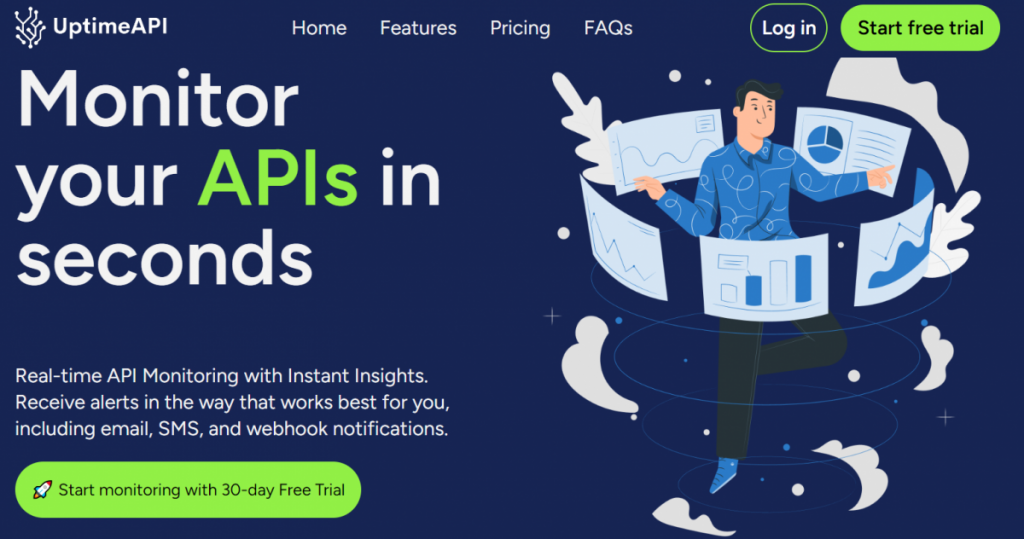In the ever-evolving landscape of digital services, the reliability and performance of APIs (Application Programming Interfaces) play a pivotal role. Downtime or sluggish response times can lead to user frustration and revenue loss. To stay ahead of potential issues, developers and businesses turn to robust API monitoring solutions. In this article, we’ll explore the intricacies of real time API monitoring, with a focus on UptimeAPI, and delve into the API responses that provide critical insights into the health of your APIs.
The Importance of Real-Time API Monitoring

APIs act as the backbone for countless web and mobile applications, facilitating seamless communication between different software components. However, even the most well-designed APIs can encounter issues, ranging from server outages to unexpected latency spikes. Real-time API monitoring is the proactive approach to detect and address these issues promptly, ensuring a smooth and reliable user experience.
Introducing UptimeAPI
What sets UptimeAPI apart in the realm of API monitoring?
1. Real-Time Checks:
UptimeAPI stands out with its ability to perform real-time checks on your APIs. With checks every minute, you receive instantaneous feedback on the status and performance of your APIs, allowing for swift responses to any anomalies.
2. User-Friendly Dashboard:
The platform boasts an intuitive dashboard that presents complex monitoring data in an easily digestible format. Track uptime percentages, response times, and other key metrics at a glance, empowering both developers and business stakeholders to make informed decisions.
3. Customizable Alerts:
UptimeAPI understands that proactive monitoring involves more than just observation. With customizable alerts, you can set thresholds for downtime or response times and receive notifications through various channels, including email, SMS, or popular collaboration platforms like Slack.
Exploring UptimeAPI’s API Responses

One of the defining features of UptimeAPI is the clarity and depth of its API responses. These responses go beyond a simple ‘up’ or ‘down’ status, providing nuanced insights into the performance of your APIs.
1. Uptime Status
The most fundamental API response from UptimeAPI is the current uptime status. This response informs you whether your API is operational or if there’s an ongoing issue.
{
"status": "up",
"message": "API is operational. All systems are functioning as expected."
}2. Downtime Notification
In the unfortunate event of downtime, UptimeAPI ensures you are promptly notified with detailed information about the issue.
{
"status": "down",
"message": "Downtime detected. Investigating the root cause."
}This immediate notification allows your team to initiate quick remedial actions, reducing the impact on users and overall system reliability.
3. Performance Metrics
UptimeAPI doesn’t stop at mere status reports; it goes further by providing performance metrics to help you understand how well your API is performing.
{
"status": "up",
"response_time": 120, // in milliseconds
"uptime_percentage": 99.8
}These metrics include response times and overall uptime percentage, offering granular insights into the performance of your APIs and aiding in optimization efforts.
Conclusion
Real-time API monitoring is not just a luxury; it’s a necessity in today’s digital landscape. UptimeAPI emerges as a comprehensive solution, offering not only real-time checks and a user-friendly dashboard but also detailed and actionable API responses.
As you embark on the journey of optimizing your API infrastructure, consider integrating UptimeAPI into your toolkit. Its affordability, robust features, and insightful API responses make it a valuable asset for any developer or business seeking to ensure the consistent and reliable performance of their APIs. Stay ahead of potential issues and provide your users with a seamless experience by embracing the power of real-time API monitoring with UptimeAPI.
Read More: Company profile APIUsage Cases

